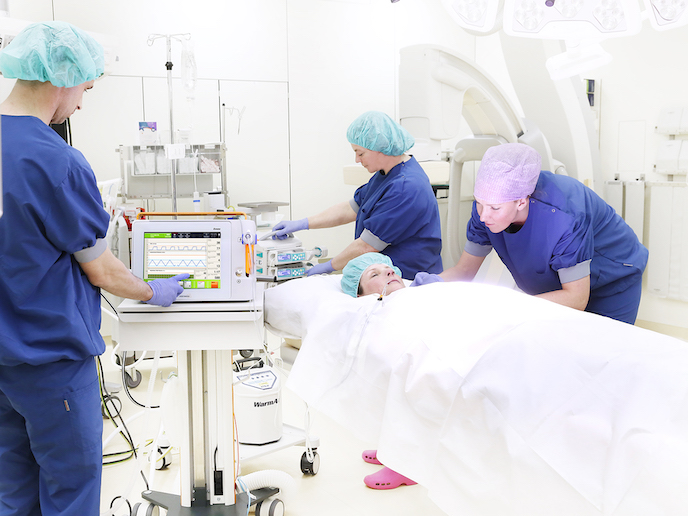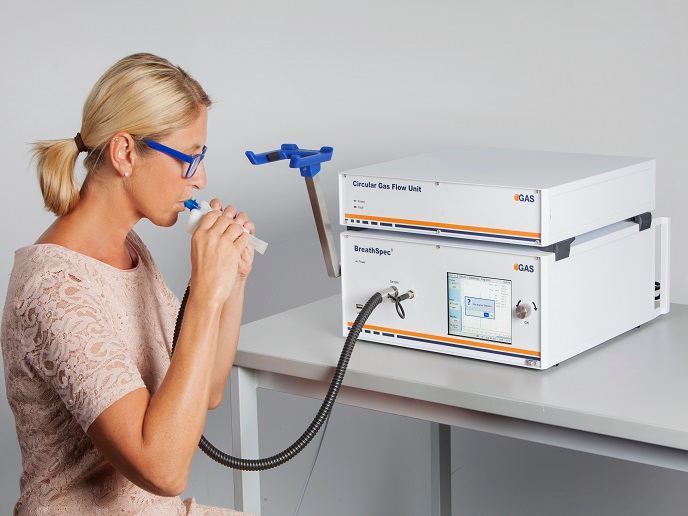New ventilation technique improves surgery and patient care
Standard patient ventilation techniques rely on passive and uncontrolled expiration, requiring a large bore endotracheal tube with an outer diameter (OD) of 8-11 mm. This tube hampers the surgeon’s view during ear-nose-throat (ENT) surgery and increases patient discomfort on waking, and afterwards. Furthermore, passive expiration induces alveolar collapse (airway closure) in almost all cases, with a higher risk in (amongst others) obese patients and during open abdominal surgery. Also, fast and uncontrolled expiration has been shown to be a source of lung damage. The EVA (Expiratory Ventilation Assistance) project has developed a new technology, FCV(opens in new window), that allows efficient ventilation through a thin tube (OD of 4.4 mm) by uniquely controlling the full ventilation cycle. This offers increased ventilation performance and less risk of lung damage, while creating more space for surgeons to work. While a basic version of the technology (the manual ventilator Ventrain®) has been on the market for a few years, EU-support has enabled Ventinova(opens in new window) to develop and commercialise the CE marked mechanical ventilator Evone® for the operating room. Successful trials The EVA team first performed in-vivo studies in healthy pigs and pigs with a lung disease. These studies, comparing FCV to conventional ventilation, clearly demonstrated increased ventilation performance and decreased alveolar collapse in all FCV ventilated animals. Additionally, lung protective effects were observed in the lung-sick animals. Based on these results, the device was granted the CE mark(opens in new window), allowing its clinical use in the EU. Subsequently, safe and efficient patient ventilation with Evone during ENT surgery was demonstrated in an observational study, published recently in the European Journal of Anaesthesiology(opens in new window). This study was followed by four randomised controlled trials in specific patient populations: ENT patients, patients undergoing open abdominal surgery, and morbidly obese patients. Preliminary results indicate significant patient benefits, with improved surgical conditions, improved patient comfort, and increased ventilation efficiency. Full results of these studies will be presented at the Euroanaesthesia 2019(opens in new window). “The fact that a small lumen endotracheal tube, with an outer diameter of only 4.4 mm and an inner diameter of less than 3 mm was used to efficiently ventilate, demonstrates the innovative and ground-breaking character of this disruptive ventilation technique,” says project coordinator Dr José van der Hoorn. The EVA team has currently lined up distributors in a number of countries(opens in new window) across Europe and is working to establish reference centres in these countries to help with the implementation of the technology. Additionally, Ventinova’s Scientific Advisory Board alongside key opinion leaders in the field, are further exploring the use of FCV for wider applications. Experts already appreciate the potential benefits of FCV in the intensive care unit (ICU): patients under long-term ventilation are at risk of developing ventilator induced lung injury (VILI), increasing hospital stays and mortality rates. FCV, which resembles natural breathing, might reduce the risk of lung damage in these vulnerable patients. “Indeed, during a clinical demonstration we were asked to help a man needing life-saving surgery. Current ventilators could not stabilise his hemodynamics and respiration, making surgery impossible,” says Dr van der Hoorn. “We used our ventilator to stabilise the patient so that surgery could be performed. This new technique is already changing lives!”







